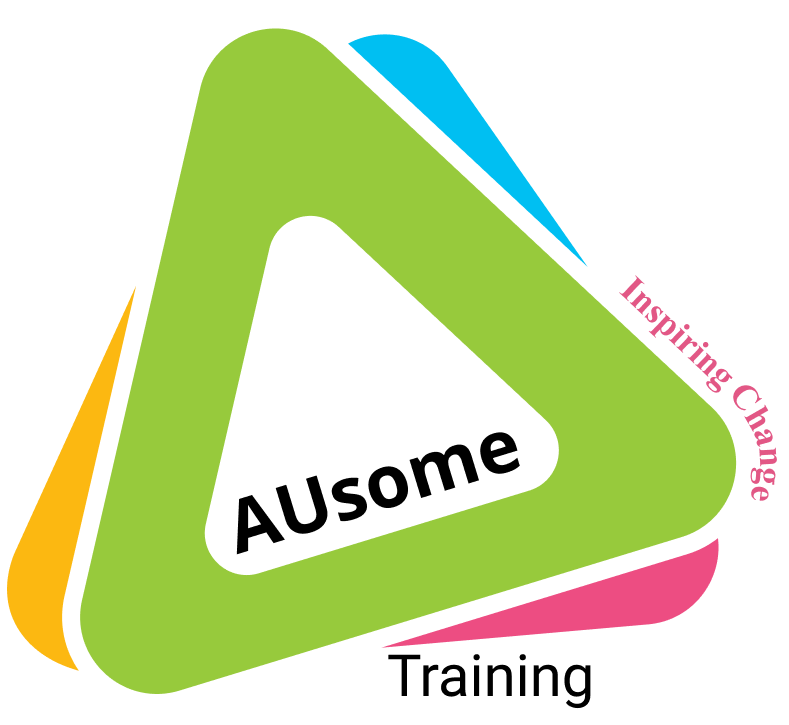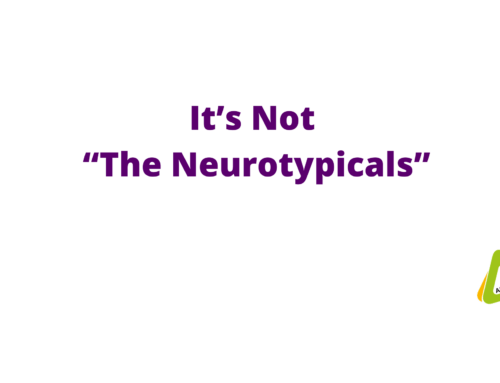Autism and sensory is a big area and there are lots of different elements involved. In this article I hope to break this down and to explain terms we often here in relation to the sensory experiences of an Autistic person.
What does sensory mean? The Collins Dictionary tells us that it means means
relating to the physical senses.
…sensory information passing through the spinal cord.
…our body’s sensory system. “
Medicinenet.com tells us that “Sensory: Relating to sensation, to the perception of a stimulus, to the voyage made by incoming nerve impulses from the sense organs to the nerve centres or to the senses themselves.”
You may notice that neither of these definitions mention autism. The word sensory is often used to describe Autistics but we are ALL sensory beings. We are born into this world as sensory little blobs and we sense and feel our way through it. As we feel our way we make sense of what we encounter and we learn about our environment. All of us, we all learn through our senses and because Autistics are human that means we do too.
Far too often I’ve seen someone ask a question about an Autistic child’s behaviour and everyone advises them that it is “sensory”. The go-to explanation for an Autistic child’s behaviour is “sensory”. Because somehow autism and sensory have become synonymous. But what does that even mean?
Here’s an example of where people use this “autism and sensory” idea. A parent shared a story that her five year old son “exploded” in class. He turned his desk upside down. Other parents advised that this was “sensory” and that he was looking for sensory input. I asked her if she’d asked her child and she responded by saying he had told her that everyone was annoying him. So there’s the answer. He said that everyone was annoying him.
Here’s where people seem to have an alternative understanding of what “sensory” means.
What does sensory mean?
If we use the Collins definition above we know that “sensory” means sensing information so this little boy sensed that people were annoying him. We don’t have much more information to go on but let’s apply the average school experience for Autistic children to his experience. Our classrooms are filled with distractions, noises, sights and textures that every child processes but may be too much for an Autistic child because we take in more information from our surroundings. We are highly sensitive so we also take in the energy in the room. We can sense how other people feel and how other people feel towards us.
When people talk about autism and the “sensory environment” they often do not include the social environment but our sensory environment includes the people in it. It also includes how those people act towards us and interact with us. And let’s face it people interact differently with us.
He said that everyone was annoying him. He was five and five year olds don’t usually go into great detail with their explanations but he was well able to voice that he was not happy in his social environment.
If you picture our sensory systems as a computer for a moment then you might picture what we call “sensory input” as what goes into that computer. Sensory processing are the actions that computer carries out with that input or information. We also need output or else the hard drive will fill up so we need to output some of that information or input or energy.
The little boy in this example did just that. His sensory response to all this negative input was to turn a desk over. He wasn’t looking for input. He was outputting because his system was full of negative input. Of course his response wasn’t just sensory, it was a sensory-emotional response.

I find that this idea of sensory input is often misunderstood and that the word “sensory” has almost lost all meaning because it is thrown into conversations to unnecessarily complicate discussion.
If this child wasn’t Autistic and did the same thing then I’m pretty sure the focus would not be on “sensory” and would be more on emotional. He is a human child so he has emotions. In fact we could look at emotions as responses to sensory input in all humans.
Often when someone asks “why does my Autistic child do this or do that” we will actually find the answer when we ask “why does a human child do this or do that”. Little humans (and big ones too) can get overwhelmed when they are surrounded by too much negative input. Our emotions are a way to output.
In this example the child did not need a sensory room or therapy sessions. He needed his environment to be better. He needed people to annoy him less.
What about seeking?
I think the above example illustrates the impression people have that Autistics are sensory seekers. There is lots of information on sensory seeking behaviours but most of it seems to be a mish mash of misinterpreted stimming, dismissed trauma responses, medical conditions like EDS (Ehlers Danlos Synrdrome), motor conditions and normal human behaviour.
It’s all piled under a neat heading of Sensory Processing Disorder.
What is Sensory Processing Disorder?
Without going into complicated definitions and science speak we can simply say SPD is the idea that Autistics have faulty senses or that we have an inability to process input from our environment correctly. Correctly here of course means in a non-autistic way!
SPD then gets tied to emotional regulation but often the social environment is omitted from this discussion also. Parents are told that their children have difficulty regulating their emotional responses but what are they responding to? How much attention is paid to their social environment? How much investigation is there into how others respond to and interact with the child before diagnosing the child?
By saying a child has difficulty processing their environment they are inferring that the environment is the same for every child and it is not. The world rejects Autistics so we are responding to that rejection every day. We can’t say someone can’t process their environment appropriately without investigating what their environment actually is.
What is Sensory Overload?
All humans who experience too much sensory input will reach sensory overload. Just like that computer I mentioned earlier our systems only have only so much capacity for sensory and emotional input. What happens to an overloaded human? They shut down or meltdown. Sensory overload is used as a torture technique. Torturers use it to confuse or break down their victims.
Instead of separating ‘“sensory” we need to talk more about sensory-emotional.
Autistics have heightened senses. We have more input to process than a person with duller senses does. So essentially we are not processing the same environment. Now add in how the world treats us so negatively and see how easily you’d process all of that. Then add in how our natural way of processing this input through stimming is often inhibited, stamped out or redirected . Now you might begin to see why Autistics get overloaded faster than people who are accepted in this world.
What is Seeking and Avoiding?
I mentioned seeking earlier and again all humans are sensory seekers sometimes. When we sense we are hungry we seek food. When we sense we are tired we seek sleep. At times when we sense we are upset we seek a way to output and we cry or throw something. Autistics are human so we also seek things when we sense a need. We also seek out things that soothe our senses or that bring us joy. When we sense we feel bad we seek out inputs that will make us feel better. For some of us that is a hot bath, for others it’s a visit to the gym or a glass of wine.
All humans are also sensory avoiders. If we sense the smell of burning rubber we seek a way to avoid it whether it’s by leaving the area or blocking our noses. That is sensory avoiding behaviour. If we sense a room is too hot we either leave the room or change the environment by opening a window or turning down the heat. This is also sensory avoiding behaviour. If we don’t like nuts then we avoid foods with nuts. If we don’t like heavy metal then we don’t listen to heavy metal. This can include sensory input we get from other people also.That co-worker you hide from? Well they give you negative input so you try to avoid them when you can.
Basically we avoid things that offend our senses or make us feel bad and seek out things that give us a positive feeling. You could say that we are constantly seeking and avoiding in order to create a sense of balance within us.
There is nothing to pathologize about normal human behaviour unless of course you don’t consider Autistics as human.
Hypo and Hyper Reactions
“Autistics can be hypo or hyper reactive to sensory input even within the one sense” says the “autism expert” proudly to the conference audience. The audience accepts this like it’s some sort of breakthrough in understanding autism. Guess what? All humans can. Humans might not notice the smell of their own skin but they will notice the smell of their dinner burning. Humans may not notice a little ant in their line of vision but will notice an elephant. Humans will not respond in the same way to candlelit dinner tables as they do to strobe lights in a nightclub. We are all hypo and hyper sensitive, even within the one sense.
When someone can’t tolerate spicy food do we say they have spicy food processing disorder?
When someone prefers spearmint to peppermint do we say they have peppermint processing disorder or that their senses can’t process mints correctly?
When someone finds milk chocolate bland but enjoys dark chocolate do we say they are hypo sensitive to cocoa?
When someone prefers ironed shirts to wrinkled shirts do we say they are hypersensitive to textures?
When someone drives slow do we say they are exhibiting sensory avoidance behaviour?
We don’t usually talk about humans in this way because we tend not to pathologise everything humans do. We only tend to do this of course if they are a minority who are not afforded the right to represent themselves and to speak for themselves. We accept human sensory differences and it’s about time we started to accept Autistic differences and changed the environment accordingly. That very much includes the social environment.
If you’d like to learn more on this we have a short course on Autism and Sensory Processing available to do anytime on our site. We also have a longer course Understanding Behaviour which explains all of this in great detail.




